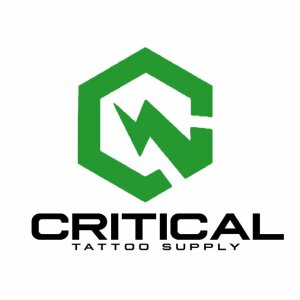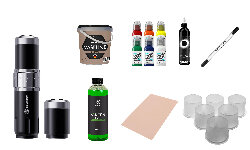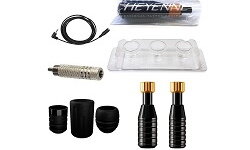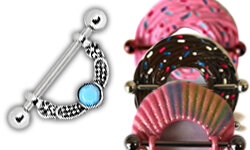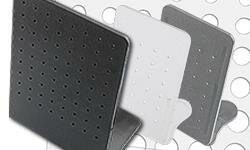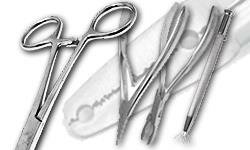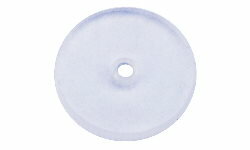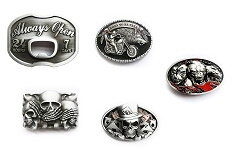Top Tattooing Mistakes – and how to avoid them
As an aspiring tattoo artist, you're often faced with a steep learning curve. Tattooing is not only an art form, but also a craft that requires a deep understanding of technique, hygiene, skin, and materials. In this guide, we’ll show you the most common mistakes made during tattooing – and how to avoid them. This will help you improve your skills and deliver the best possible work for your clients.
Mistake #1: Poor Hygiene
Perhaps the most serious mistake: insufficient hygiene. Tattooing is a medical procedure involving the skin and must be carried out under strict hygienic conditions.
Common oversights:
- Working without gloves
- Unclean or poorly disinfected surfaces
- Reusing disposable materials
- No protection for work surfaces (e.g., no barrier film)
Consequences:
- Risk of infection for the client
- Risk of contamination for yourself (e.g., hepatitis, HIV)
- Legal consequences during inspections
Solution:
- Learn the basics of hygiene regulations (varies by country)
- Use only sterile, single-use materials
- Keep your studio and equipment consistently clean
- Check out our tattoo hygiene products.
Mistake #2: Cheap or unsuitable equipment
Saving in the wrong place will cost you more in the end – especially in tattooing.
What often goes wrong:
- Cheap machines with inconsistent power
- Low-quality needles (they may break or puncture unevenly)
- Power sources without stable voltage control
Consequences:
- Unclean linework
- Unpleasant sensation for the client
- Quick wear and frequent malfunctions
Solution:
- Invest in high-quality equipment
- Test different machines and find what suits your style
- Look for trusted brands with good industry reviews
- Buy high-grade tattoo supplies from a reliable online shop
Mistake #3: Using non-REACH compliant or unsuitable materials
Ink selection is critical – not only for results but also for health.
What to avoid:
- Using tattoo inks that are not REACH compliant
- Colors with banned ingredients or without safety data sheets
Consequences:
- Health risks for the client (allergies, inflammation)
- Possible ban from operating during inspections
- Long-term damage to your reputation
Solution:
- Only use EU-approved REACH-compliant tattoo inks with certification
- Learn about ingredients and allergens
- Keep records of the inks you use – this builds trust
Mistake #4: Incorrect hand or machine speed
Speed is a crucial factor – both in your machine and hand movement.
Typical issues:
- Too slow: Ink bleeds under the skin, lines get blurry
- Too fast: Ink doesn’t get embedded properly
Consequences:
- Unclean results
- Need for touch-ups
- More trauma to the skin and longer healing
Solution:
- Practice on practice skin to develop the right feel for speed
- Adjust your machine speed to your style and the design
- Observe how the skin reacts to the needle
Mistake #5: Not stretching the skin properly
Many beginners underestimate how important skin tension is during tattooing.
What happens if skin is loose:
- The needle doesn’t hit the skin at the correct angle
- Lines become uneven or wavy
- Ink is embedded inconsistently
Solution:
- Learn how to properly stretch the skin with one hand while tattooing with the other
- Ask clients to hold certain positions to help with skin tension
- Work in small sections and keep adjusting skin tension
Mistake #6: Overestimating your abilities
It’s easy to get overconfident when you're proud of your first results – but overestimating yourself can be dangerous.
Common mistakes:
- Tackling complex designs without enough experience
- Tattooing difficult body areas without prior practice
- Taking on client work you're not ready for
Consequences:
- Unhappy clients
- Bad reviews or even legal issues
- Stress and loss of motivation
Solution:
- Take it step by step
- Practice as much as you can on practice skin and volunteer models
- Get feedback from experienced tattoo artists
Other common beginner mistakes
Going too deep:
- Ink lands below the dermis and spreads
- Can cause scarring or blowouts
Too shallow:
- Ink doesn’t hold well and fades quickly
Poor aftercare advice:
- Clients receive incorrect guidance
- Results in inflammation or poor healing
Unprofessional behavior:
- No consultation before the appointment
- Lack of clear communication about process, care, or risks
No sketches or stencils used:
- Freehand work without practice is risky
Tattoo mistakes are learning opportunities
Mistakes are part of the learning process – the key is to learn from them. The difference between an average and a great tattoo artist lies not just in talent, but in the willingness to keep learning, reflecting, and improving. Use this knowledge to elevate your technique, hygiene, and client care.
The more aware you are of your mistakes, the faster you’ll improve – and the better your tattoos will become. Stay curious, stay teachable – and enjoy your journey to becoming a professional tattoo artist!

 Black
Black White
White Grey
Grey Brown
Brown Red
Red Yellow
Yellow Pink
Pink Skin Tones
Skin Tones Orange
Orange Violet
Violet Green
Green Blue
Blue
